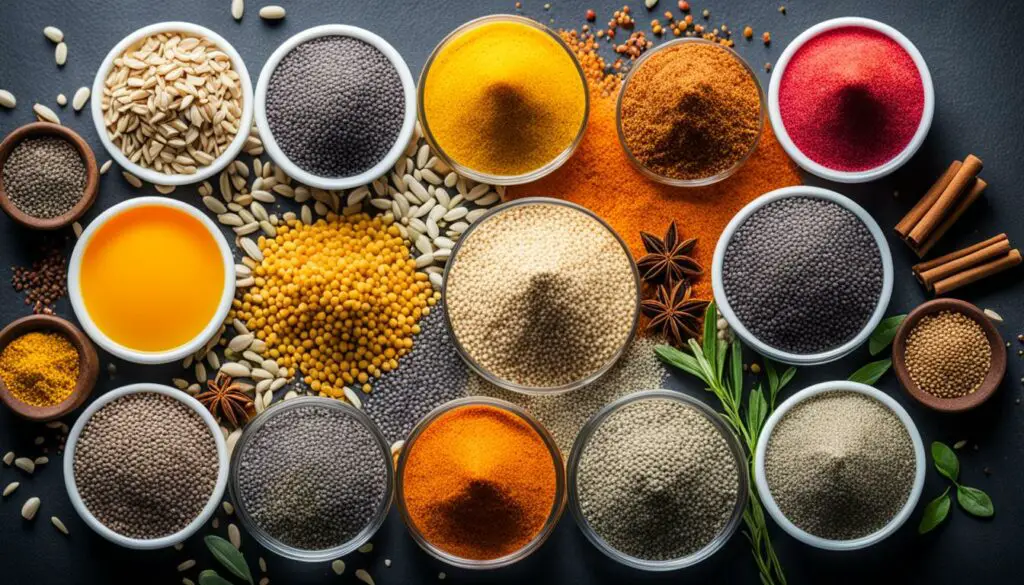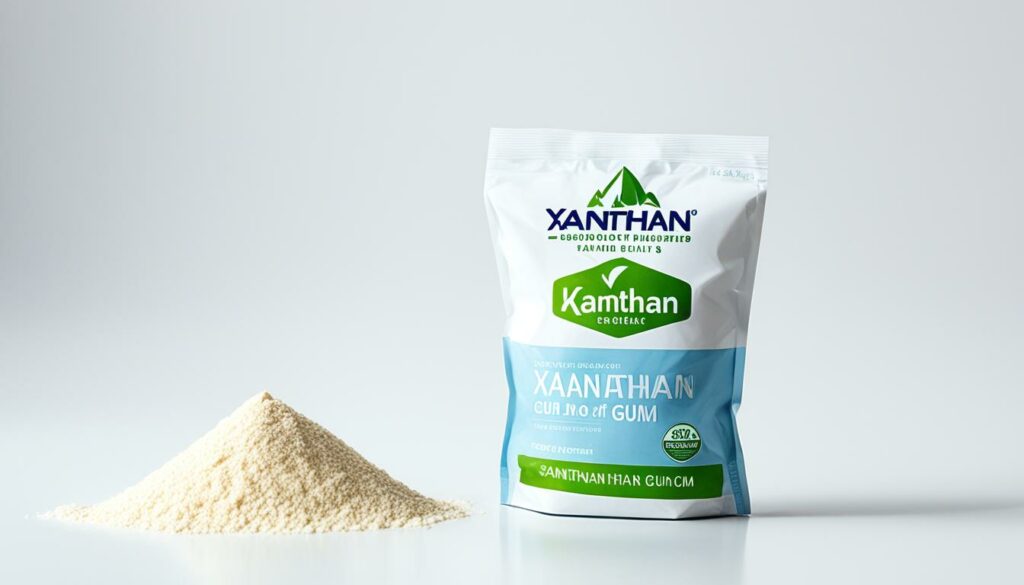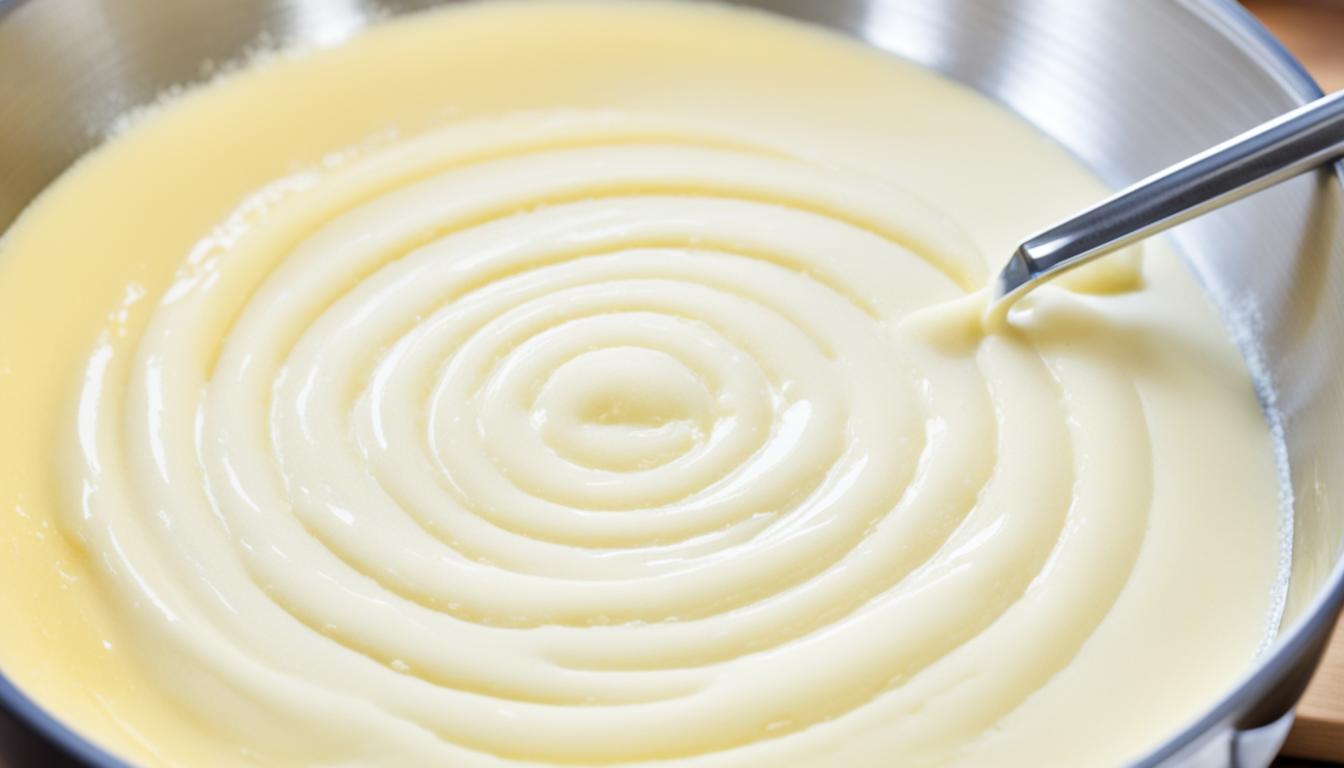Originally posted on March 26, 2024 @ 8:11 pm
Are you tired of seeing xanthan gum listed in every gluten-free recipe you come across? Have you ever wondered if you can omit xanthan gum from your baking without sacrificing the texture and structure of your favorite treats? Well, you’re not alone! Many people have questioned the necessity of this common ingredient and sought alternatives to create xanthan gum-free recipes. In this article, we will delve into the world of xanthan gum, explore its role in baking, and reveal tips and tricks for achieving great results without it.
Contents
- 1 What Is Xanthan Gum and Why Is It Used in Baking?
- 2 How to Use Xanthan Gum in Gluten-Free Baking
- 3 Alternatives to Xanthan Gum in Gluten-Free Baking
- 4 Effect of Omitting Xanthan Gum in Baked Goods
- 5 Where to Purchase Xanthan Gum and Substitutes
- 6 Tips for Baking Without Xanthan Gum
- 7 Conclusion
- 8 FAQ
- 8.1 Can I omit xanthan gum from a recipe?
- 8.2 What is xanthan gum and why is it used in baking?
- 8.3 How do I use xanthan gum in gluten-free baking?
- 8.4 What are the alternatives to xanthan gum in gluten-free baking?
- 8.5 What is the effect of omitting xanthan gum in baked goods?
- 8.6 Where can I purchase xanthan gum and xanthan gum substitutes?
- 8.7 What are some tips for baking without xanthan gum?
- 8.8 Can I achieve good results in gluten-free baking without xanthan gum?
- 9 Source Links
Key Takeaways:
- Xanthan gum is commonly used in gluten-free baking to provide structure and moisture to baked goods.
- Some people may want to omit xanthan gum from their recipes due to allergies, sensitivities, or simply not having it on hand.
- There are several alternatives to xanthan gum, such as chia seeds, flaxseeds, guar gum, and konjac powder, that can be used in gluten-free baking.
- Baking without xanthan gum may require adjustments and experimentation, but it is possible to achieve great results in terms of texture, structure, and moisture.
- The choice to include or omit xanthan gum depends on personal preferences, dietary restrictions, and ingredient availability.
What Is Xanthan Gum and Why Is It Used in Baking?
Xanthan gum is a common food additive that serves as a thickener and binding agent in various products. It is widely used in baking to enhance the texture and structure of gluten-free baked goods, preventing them from becoming dry and crumbly.
This versatile ingredient is added to a wide range of products, including sauces, salad dressings, ice cream, and even toothpaste. Its ability to prevent oil separation and create a smoother texture makes it a valuable addition to many recipes.
In gluten-free baking, xanthan gum plays a crucial role in mimicking some of the properties of gluten. Gluten, a protein found in wheat and other grains, provides elasticity and holds ingredients together. Since gluten is absent in gluten-free flours, xanthan gum steps in to perform these functions.
By binding the ingredients together and locking in moisture, xanthan gum helps to create a cohesive structure in gluten-free baked goods. This results in a better rise, improved texture, and a more enjoyable eating experience.
How to Use Xanthan Gum in Gluten-Free Baking
When it comes to gluten-free baking, using xanthan gum can be a game-changer. It helps provide structure and moisture to your baked goods, giving them a texture similar to their gluten-containing counterparts. Here are some tips on how to use xanthan gum effectively in your gluten-free recipes.
- Check the ingredients: Before adding xanthan gum to your recipe, make sure to check the ingredients of both your recipe and the gluten-free flour blend you are using. Some pre-made gluten-free flour blends already contain xanthan gum, so you may not need to add more.
- Adjust the amount: If your gluten-free flour blend does not contain xanthan gum, you will need to include it in your recipe. The amount of xanthan gum needed can vary depending on the type of flour used. As a general guideline, you can add about ¼ teaspoon of xanthan gum for each cup of flour. However, it’s best to test the recipe and adjust the amount of xanthan gum as needed to achieve the desired texture and structure.
- Experiment with different flour blends: Depending on your preferences and dietary restrictions, you can try different gluten-free flour blends in your recipes. Nut-based flours like almond or coconut flour can be used as a substitute for traditional wheat flour. If you prefer a more convenient option, there are also pre-made gluten-free flour blends available in stores.
- Follow flour-based recipes: Xanthan gum works best in flour-based recipes like muffins, cakes, and cookies. It helps bind the ingredients together and prevents them from becoming dry and crumbly. For recipes that rely heavily on other ingredients such as eggs, fats, or liquids, you may be able to skip the xanthan gum without sacrificing too much on texture.
“Xanthan gum can be a great addition to your gluten-free baking arsenal, providing the structure and moisture needed for delicious baked goods.”
Remember, the key to successfully using xanthan gum in gluten-free baking is to check the ingredients of your recipe and adjust the amount of xanthan gum as needed. By following these tips, you can create gluten-free baked goods that are just as delicious and satisfying as their gluten-containing counterparts.
| Gluten-Free Baking Tips | Benefits |
|---|---|
| Check the ingredients | Ensure xanthan gum is needed |
| Adjust the amount | Customize texture and structure |
| Experiment with different flour blends | Variety of flavor and texture options |
| Follow flour-based recipes | Optimal results in muffins, cakes, and cookies |
Alternatives to Xanthan Gum in Gluten-Free Baking

When it comes to gluten-free baking, there are several alternatives to xanthan gum that can be just as effective in providing the desired texture and structure to your baked goods.
One popular alternative is using chia seeds or flaxseeds. These seeds can be ground and mixed with water to create a gel-like consistency, which acts as a natural binding agent. This “chia/flaxseed egg” can then be used as a substitute for xanthan gum in recipes. However, it is important to note that this substitution may result in a slightly nuttier taste and a longer cooking time.
If you prefer to skip xanthan gum altogether, especially in recipes that already have sufficient liquid, fats, and binding ingredients, you can still achieve great results. Your baked goods may have a slightly drier texture, but they can still turn out delicious. Just be sure to adjust the recipe accordingly and experiment with different variations to find what works best for you.
Aside from chia seeds and flaxseeds, there are other substitutes for xanthan gum that can be used depending on the recipe and desired outcome. Guar gum, agar agar, and konjac powder are some popular alternatives that can help bind ingredients and create a similar texture to xanthan gum. These substitutes may require different measurements or preparation methods, so it’s important to follow the recipe instructions carefully.
By exploring these alternatives and adapting recipes to suit your preferences, you can create gluten-free baked goods without the need for xanthan gum. Whether you choose to use chia seeds, flaxseeds, or other suggested substitutes, you can still enjoy delicious treats with a slightly different twist.
Effect of Omitting Xanthan Gum in Baked Goods
When omitting xanthan gum from a recipe, it can have an impact on the texture, structure, and rise of the baked goods. Without xanthan gum, the resulting baked goods may have a slightly different texture compared to those made with xanthan gum. They may also be slightly drier in nature.
However, achieving good results without xanthan gum is still possible by ensuring the recipe has enough liquid, fats, and other moisture-retaining ingredients.
Fats such as butter, eggs, and oil can contribute to retaining moisture in the baked goods. The liquid content of the recipe should also be adjusted to maintain the desired level of moisture. By carefully balancing these ingredients, it is possible to achieve a satisfactory result.
Keep in mind that the exact outcome may vary depending on the specific recipe and the substitution used. Experimentation and adjustments may be needed to find the perfect recipe variation that meets your preferences.
Example Recipe Variation:
To compensate for the lack of xanthan gum, you can try adding an extra tablespoon of oil and an extra egg to the batter. These additional fats and liquid content will help retain moisture and create a desirable texture in the baked goods.
| Xanthan Gum | Recipe Variation |
|---|---|
| Structure | May be slightly affected; adjust with additional fats and moisture-retaining ingredients |
| Texture | May be slightly different; adjust with additional fats and moisture-retaining ingredients |
| Rise | May be slightly affected; adjust with additional fats and moisture-retaining ingredients |
| Dryness | May be slightly increased; adjust with additional fats and moisture-retaining ingredients |
Experimenting with different recipe variations and adjusting the ingredients can help achieve great results even without xanthan gum. Remember to consider the impact on texture, structure, rise, and dryness, and make suitable adaptations to the recipe to ensure optimal moisture retention.
Where to Purchase Xanthan Gum and Substitutes

Xanthan gum is a widely available ingredient that can be found in most supermarkets and health food stores. It is typically located in the gluten-free section or near baking items. If you prefer the convenience of online shopping, xanthan gum is also readily available for purchase on various websites.
When it comes to xanthan gum substitutes, there are several options to consider. Here are some popular alternatives:
- Chia seeds: These tiny seeds can be ground and used as a binding agent in recipes. They create a gel-like consistency when hydrated, which helps hold ingredients together.
- Flaxseeds: Similar to chia seeds, flaxseeds can be ground and mixed with water to create a gel-like substance that can be used in place of xanthan gum.
- Guar gum: Derived from the guar bean, guar gum is another common substitute for xanthan gum. It provides similar thickening and binding properties.
- Konjac powder: A natural plant-based powder, konjac powder can be used as a substitute for xanthan gum in gluten-free baking.
- Psyllium husk powder: Made from the outer coating of the psyllium seed, this powder can help add structure to gluten-free baked goods.
When choosing a substitute, consider factors such as availability, dietary restrictions, and personal preferences. It’s always a good idea to read product labels and follow the recommended usage and substitution guidelines.
Recommended Xanthan Gum Brands and Substitutes
| Brand | Xanthan Gum | Substitutes |
|---|---|---|
| Bob’s Red Mill | Chia seeds, flaxseeds, guar gum | |
| Anthony’s | Konjac powder, psyllium husk powder | |
| NOW Foods | Chia seeds, guar gum, konjac powder |
Always ensure that you are purchasing quality products from reputable brands. Reading customer reviews and checking for certifications, such as gluten-free labels, can help you make informed choices.
Experiment with different brands and substitutes to find the ones that work best for your specific baking needs. What matters most is achieving great results in terms of texture, structure, and moisture, even without xanthan gum.
Tips for Baking Without Xanthan Gum
Baking without xanthan gum may seem daunting, but with a few adjustments and some experimentation, you can still achieve delicious gluten-free baked goods. Here are some helpful tips to guide you:
- Experiment with Measurements: Instead of relying on precise measurements for substitutions, it’s best to experiment and adjust based on the specific recipe and desired outcome. Start with small adjustments and gradually increase or decrease as needed to find the perfect balance.
- Use Binding Ingredients: Incorporate binding ingredients like eggs, mashed bananas, or yogurt into your recipes. These ingredients help provide structure and moisture to your baked goods, making them less prone to crumbling.
- Try the Scalding Technique: The scalding technique involves pouring boiling water into gluten-free flour to activate the proteins and add elasticity to the dough. This can help improve the texture and reduce the need for xanthan gum.
- Explore Powder Substitutes: If you’re looking for alternatives to xanthan gum, try using guar gum, konjac powder, or psyllium husk powder. These powders can provide similar binding properties and help improve the texture of your baked goods.
- Adjust Liquid Ratios: Without xanthan gum, you may need to adjust the liquid ratios in your recipes. Adding a bit more liquid, such as milk or water, can help compensate for the absence of xanthan gum and prevent dryness.
- Rest the Dough or Batter: Allowing the dough or batter to rest before baking can help hydrate the gluten-free flours and improve the texture of your baked goods. This resting period allows the ingredients to meld together and creates a better overall structure.
- Monitor Oven Temperature: Gluten-free baked goods can be sensitive to oven temperature. Keep a close eye on the temperature to avoid over or underbaking. Invest in an oven thermometer for more accurate readings.
- Allow for a Resting Period: After baking, give your gluten-free baked goods a bit of time to rest. This will help them set and cool down, allowing the flavors to develop fully.
Experimenting with these tips will help you navigate the world of gluten-free baking without the need for xanthan gum. Remember, baking is a journey of discovery, so embrace the opportunity to try new techniques and adjust your recipes to achieve the best results.
Conclusion
Baking without xanthan gum is not only possible but can also yield excellent results in terms of texture, structure, and moisture. Through experimentation and the use of alternatives, it is possible to achieve delicious and satisfying gluten-free baked goods.
By adjusting recipes and exploring the suggested substitutes such as chia seeds, flaxseeds, guar gum, konjac powder, or psyllium husk powder, bakers can find the perfect balance that suits their personal preferences, dietary restrictions, and ingredient availability. Each substitution may have its own unique characteristics, resulting in slightly different tastes or textures, but this offers an opportunity for culinary innovation and creativity.
Ultimately, the decision to include or omit xanthan gum depends on individual preferences and specific recipe requirements. With careful experimentation and adaptation, bakers can achieve great results, satisfying their cravings for gluten-free treats without the need for xanthan gum. So, don’t be afraid to think outside the box, embrace the alternatives, and let your taste buds guide you to baking success!
FAQ
Can I omit xanthan gum from a recipe?
Yes, you can omit xanthan gum from a recipe. There are alternatives and recipe variations that can be used instead.
What is xanthan gum and why is it used in baking?
Xanthan gum is a common food additive used as a thickener and binding agent. It helps create a smoother texture in various products and is particularly useful in gluten-free baking to mimic some properties of gluten and hold ingredients together.
How do I use xanthan gum in gluten-free baking?
Check the ingredients of your recipe and the gluten-free flour blend you are using. If the flour blend does not contain xanthan gum, add it to your recipe. The amount needed can vary, so adjust as needed to achieve the desired texture and structure.
What are the alternatives to xanthan gum in gluten-free baking?
Chia seeds, flaxseeds, guar gum, konjac powder, and psyllium husk powder can be used as substitutes for xanthan gum. Each alternative may result in slight variations in taste and cooking time.
What is the effect of omitting xanthan gum in baked goods?
Without xanthan gum, baked goods may be slightly drier and have a different texture. However, by ensuring enough liquid, fats, and moisture-retaining ingredients are included, it is still possible to achieve good results without xanthan gum.
Where can I purchase xanthan gum and xanthan gum substitutes?
Xanthan gum can be bought at most supermarkets and health food stores. It is also available for online purchase. Xanthan gum substitutes can vary, so it is important to read product labels and follow recommendations for usage and substitutions.
What are some tips for baking without xanthan gum?
Experiment with substitutions, adjust recipes based on specific needs, use binding ingredients like eggs and mashed bananas, try the scalding technique, use powder substitutes like guar gum or konjac powder, adjust liquid ratios, rest dough or batter before baking, monitor oven temperature, and allow for a resting period for the best results.
Can I achieve good results in gluten-free baking without xanthan gum?
Yes, by exploring alternatives and adapting recipes, it is possible to achieve delicious and satisfying gluten-free baked goods without xanthan gum. It may require adjustments and experimentation, but great results in terms of texture, structure, and moisture can be achieved.








